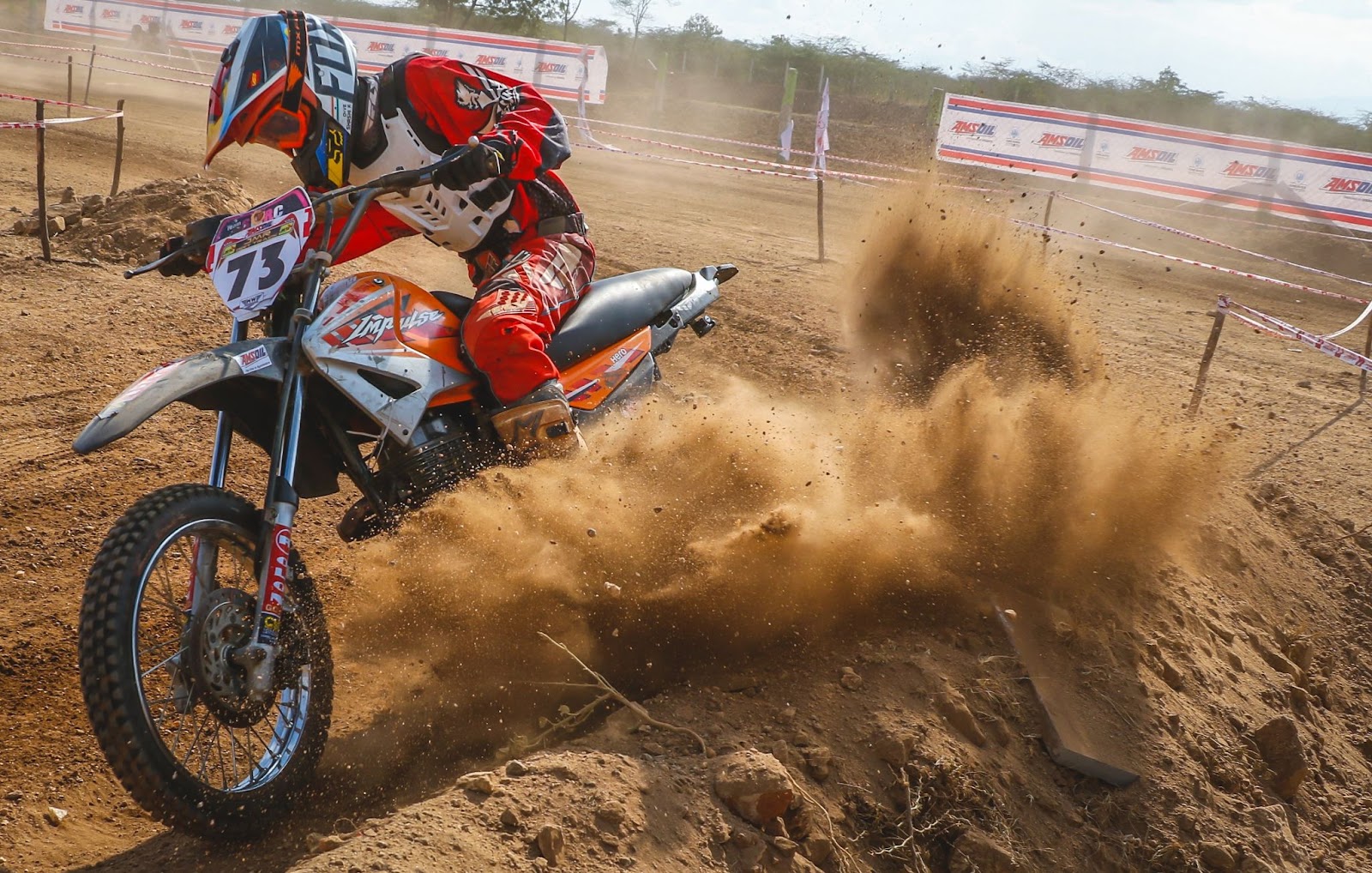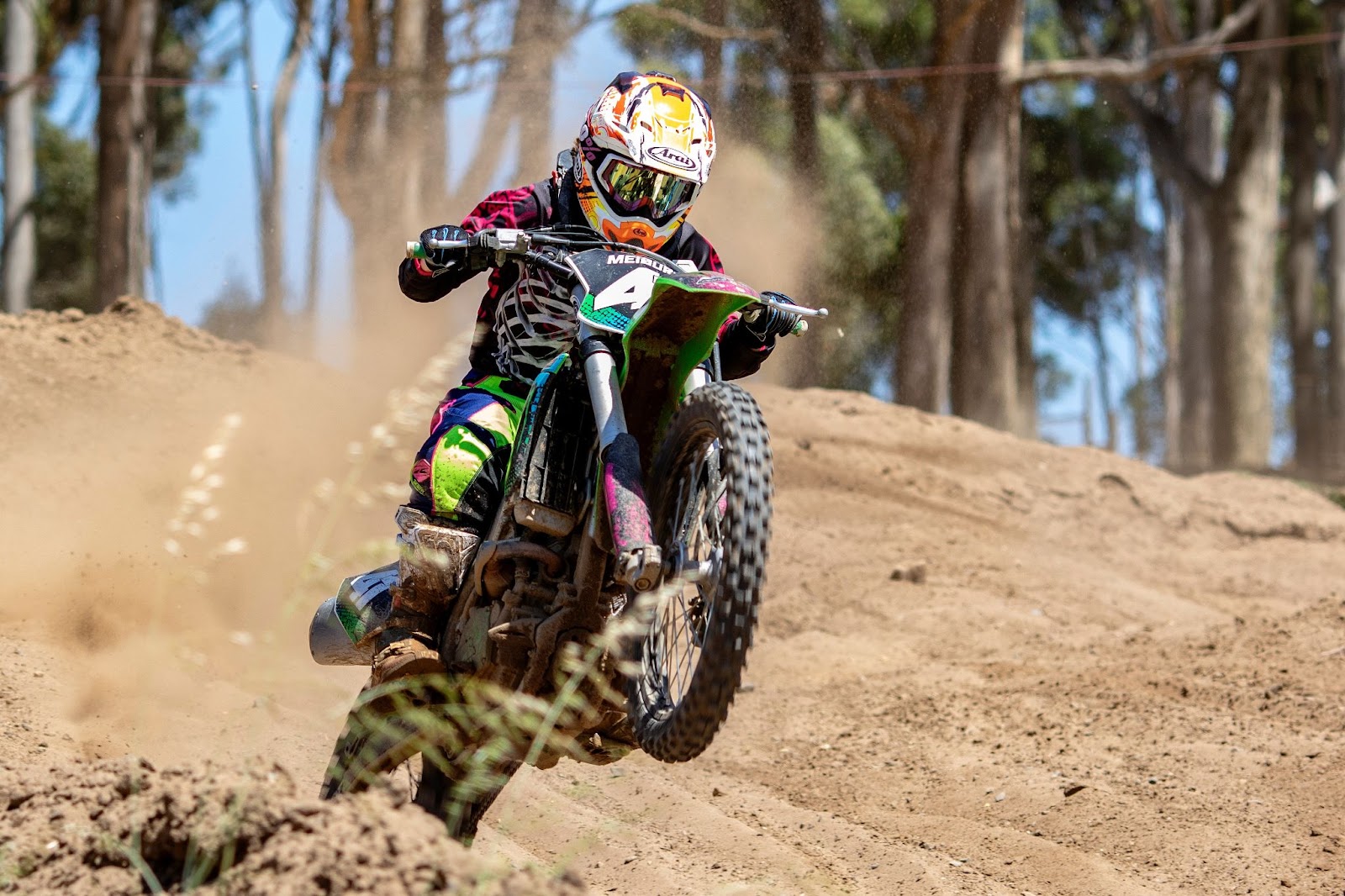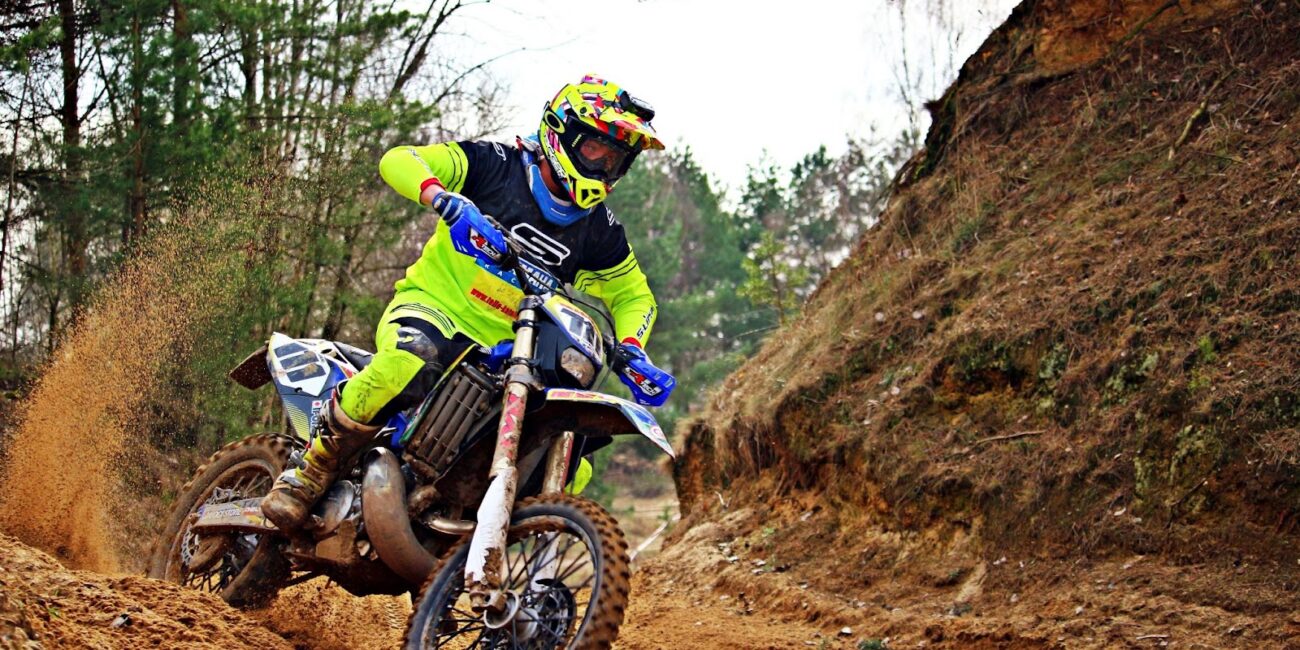What Is Off Road Racing
To gain a comprehensive understanding of Off Road Racing, you need to know its history and types. In order to provide you with a complete solution, we have introduced two sub-sections – History of Off Road Racing and Types of Off Road Racing. These sub-sections highlight important aspects of the sport that can help you appreciate the discipline in a better way.
History of Off Road Racing
Off-road racing has an intriguing history that dates back to the early 20th century. It began with informal races amongst adventurous individuals looking for an adrenaline rush. However, with time, off-road racing evolved and became a professional sport with several disciplines that vary in vehicle type, terrain, and race format.
A table can give us a better understanding of the history of off-road racing.
| Discipline | Description | Notable Races |
| Baja | Long distance desert races in Mexico | Baja 1000 |
| Dakar | Multi-stage cross-country rally race | Paris-Dakar Rally |
| Pro2/4 | Closed-course truck racing on dirt tracks | Lucas Oil Off Road Racing Series |
| Trophy Truck | High-speed desert racing on rough terrain | Mint 400 |
| Ultra4 | Cross-country endurance races on extreme terrain | King of the Hammers |
Interestingly, off-road racing includes unique details such as the evolution from a casual activity to an international professional sport. Today, it comprises of various disciplines for all types of off-road enthusiasts.
To excel in off-road racing, a pro tip is to focus not just on speed but also navigate the challenging terrains tactfully using skills like power sliding and trail braking.
From desert rally to mudslinging madness, off-road racing has a type for every dirt-loving daredevil out there.
Types of Off Road Racing
Off-road racing has various types that offer different experiences and challenges. A few examples include desert racing, rally raid, and rock crawling.
The following table shows the types of Off-Road Racing:
| Type of Racing | Description |
| Desert Racing | Scorching hot temperatures, harsh terrain. |
| Rally Raid | Multiple stages that range from dunes to rocky valleys. |
| Rock Crawling | Dedicated courses with intricate obstacles. |
Each type offers unique experiences. For instance, desert racing is famous for the difficulty level as drivers have to navigate challenging Baja terrains with minimum visibility. Similarly, in rock crawling, drivers test their driving skills by maneuvering through steep climbs and narrow passages.
One such story is when Robby Gordon took part in the 2019 Dakar Rally with his custom-built vehicle with the aim of winning the trophy for Team Speed UTV. Despite starting at the back of the pack due to a penalty, Gordon displayed exceptional driving skills and overcame multiple hurdles on the way to secure an impressive stage win.
Going off-road is like playing a real-life game of Mario Kart in the desert, but with less mushrooms and more sand in your teeth.
Desert Racing
Desert Racing involves off-road vehicles racing across challenging terrains. These vehicles often include buggies, trucks, and motorcycles built specifically for this sport.
| Vehicle Types: | Buggies | Trucks | Motorcycles |
| Terrain: | Sand Dunes | Rough Terrain | Rocky Landscapes |
| Duration: | 1-3 Days | 10-15 Hours | 2-6 Hours |
Professional drivers compete in a range of competitions such as rallies, endurance races, and short races that vary in duration from a few hours to several days. Many factors play a crucial role in the race outcome, including the skill of the driver, condition of their vehicle and strategy they deploy throughout the race.
To optimize their performance during off-road racing events, drivers must ensure their vehicles are equipped with sturdy suspension systems to handle rough terrain and high-speeds. Additionally, proper nutrition and hydration before and during these races are critical for endurance and energy levels.
If you’re looking to participate in desert racing, it’s important to invest not only in the right equipment but also in proper training programmes. Knowing how to navigate challenging terrains is crucial for success in off-road racing events.
Short course racing: where the only thing shorter than the track is the patience of the drivers stuck behind the slowpokes.
Short Course Racing
Short Course Racing is one of the unique Off Road Racing events, where contestants participate in a closed course. This racing event takes place in a specially designed layout, often with jumps and other obstacles. The track usually ranges from 0.5 miles to 1 mile in length.
In this type of racing, the cars are relatively smaller than those in other Off Road Racing events. These vehicles have modified suspension setups that enable them to withstand harsh conditions for prolonged periods. They often have four-wheel drive systems as well. Drivers race multiple laps around the circuit, with the fastest finishing time being declared the winner.
It’s worth noting that Short Course Racing has various categories of vehicles competing against one another. For example, light buggies with minimal engine modifications compete against more powerful Pro 4 trucks.
One suggestion would be for drivers to ensure they have correctly researched and prepared their vehicles for optimal performance and endurance during these races. Cheering fans must also protect themselves by wearing proper clothing – sturdy shoes recommended – and standing at a safe distance from the passing cars on the track to avoid injury or harm during the exciting event!
Rock Racing: Where 4 wheels and a death wish meet.
Rock Racing
This type of off road racing is known for its challenging and technical courses that include massive boulders and rocks. It requires drivers to navigate through an obstacle course while maintaining speed and agility. Rock Racing demands a combination of driving skills, precision, and mental toughness to overcome the harsh terrain.
Rock Racing has become increasingly popular in recent years, attracting enthusiasts who enjoy the adrenaline rush of this extreme sport. It involves highly modified trucks or buggies that are designed to handle the rugged terrain with specialized suspension systems, tires, and engines.
One unique aspect of Rock Racing is that drivers can earn bonus points by completing various challenges on the track, such as hill climbs or rock crawling. This adds an extra layer of excitement and competitiveness to the race.
Pro Tip: To succeed in Rock Racing, drivers need to focus on balance and stability while navigating through the obstacles. They should also pay attention to their line selection and approach angles to avoid getting stuck or flipping over.
Who needs roads when you have mud, jumps and adrenaline? Rally racing is the ultimate test of driver skill and car endurance.
Rally Racing
For the section on Rally Racing, this form of off-road racing is characterized by high speeds and technical courses. Here’s a breakdown of some essential details:
| Component | Details |
| Vehicles | Lightweight and agile cars |
| Course types | Off-road terrain with diverse challenges |
| Time structure | Timed stages with set start and finish points |
| Navigation | Drivers rely on detailed route instructions |
One unique aspect of rally racing is that it often takes place over several days, with drivers having to complete stages in different locations. To succeed in this demanding discipline, participants must demonstrate mastery of both car control and strategic planning.
For those looking to get into rally racing, there are a few key suggestions to keep in mind.
- Building a strong working relationship between driver and co-driver is critical for success.
- Investing in the right safety gear can help prevent injuries in the event of an accident.
- Finally, practicing regularly on varied terrain will help drivers build up their comfort level and experience levels.
By following these tips, aspiring racers can increase their chances of achieving their goals in rally racing.
Off road racing vehicles: because sometimes you just need a car that can handle both the dirt and your questionable driving skills.
Off Road Racing Vehicles
To gain a deeper understanding of Off Road Racing Vehicles, you need to know about their distinctive features and modifications. These vehicles are specially designed for extreme terrains, and their advanced features allow for greater reliability and speed. Modifications to these vehicles enable them to handle the rigorous and unpredictable conditions of Off Road Racing.

Features of Off Road Racing Vehicles
Off-road racing vehicles possess distinct features that make them ideal for off-road racing. These mammoth machines are designed to withstand the rigors of rough terrain and unpredictable obstacles that would be impossible for regular vehicles to cross.
- Heavy-duty suspension system and rugged tires
- Custom-built engines with high horsepower
- Reinforced chassis with roll cages, skid plates, and bumpers
- High ground clearance, four-wheel drive, and locking differentials
- Sophisticated navigation equipment including GPS
- Purpose-built seats and safety harnesses to ensure driver safety and comfort
When it comes to off-road racing vehicles, weight reduction plays a crucial factor in enhancing their performance. Therefore, lightweight materials like fiberglass and carbon fiber are used to build their body parts.
Pro Tip: Regular maintenance of these specialized vehicles is crucial for optimum performance on race day.
Off-road racing vehicles are like teenagers – they constantly need modifications and upgrades to keep up with their wild adventures.
Modifications in Off Road Racing Vehicles
Off-Road Racing Vehicle Upgrades
The world of off-road racing vehicles is constantly evolving, and it’s essential to keep up with the latest upgrades to remain competitive. A variety of modifications can be made in areas such as engine performance, suspension, and aerodynamics. These changes can ultimately improve speed, safety and ensure a successful race day.
| Modification Type | Description |
| Engine Upgrades | Increase power output with aftermarket parts like turbochargers and cold air intakes. |
| Suspension Improvements | Enhance handling with upgraded shocks, sway bars, and wider tires. |
| Aerodynamic Enhancements | Reduce wind resistance with improved body kits or rear wings. |
Maintaining optimal tire pressure is crucial when driving off-road. Too much or too little air pressure can quickly result in failure during a race. Increased vehicle protection through skid plates and durable bumpers that shield vital engine components from potential damage is also worth considering.
Another important aspect of off-road racing vehicles is their weight distribution. By adding or removing weight in specific areas of the vehicle, drivers can maximize handling abilities when navigating challenging terrain or sudden obstacles.
One racer recalls how implementing proper modification strategies catapulted them into the winner’s circle. By investing in expert guidance on optimal performance improvements and selecting durable parts designed specifically for off-road racing environments, their team saw dramatic improvements in speed and overall performance.
Your spine might take a beating, but at least your suspension won’t with these off-road racing vehicles.
Suspension
Suspension in off-road racing vehicles is a crucial component that withstands the demands of high-speed and rough terrain. It refers to the system that supports the weight of the vehicle and its occupants while absorbing shocks from bumps, jumps, and other obstacles encountered on the track.
Off-road racing vehicles require suspension systems that can handle intense forces generated by sudden impacts when landing from jumps or traversing uneven surfaces. The suspension consists of several components like springs, shock absorbers, control arms, and steering knuckles.
Efficient suspension arrangements optimize traction over rough terrain; that results in better performance. Modifications can be made to improve damping, ground clearance for larger tires, tire alignment angles for specific tracks, which increases cornering grip.
Properly tuned suspension gives an edge over competitors but a poorly constructed design can cause accidents or even roll overs. Neglecting regular maintenance not only leads to reduced performance but puts drivers at risk.
Don’t take chances during your next race with poor performing suspension setup; have it inspected regularly and upgrade if necessary. Don’t let a preventable incident stop you from reaching your full potential on the track.
If the tires on your off-road racing vehicle could talk, they’d probably be screaming for mercy.
Tires
Off-road racing vehicles require highly specialized equipment, including advanced suspension systems, powerful engines, and off-road tires.
| Tire Type | Description | Benefits |
| Mud Terrain Tires | Designed to perform in muddy conditions with thick and deep treads that provide excellent grip. | Superior traction on muddy terrain and enhanced self-cleaning properties. |
| All-Terrain Tires | Suitable for use on both paved and non-paved roads with a moderate tread pattern. | Improved handling and stability on all types of terrains. |
| Rock Crawler Tires | Feature jagged, irregular patterns to improve grip over rough terrain with hard surfaces such as rocks and gravel. | Durable construction that withstands impacts from rough terrain. |
Off-road vehicles equipped with off-road tires are not only faster but also incredibly durable when it comes to facing the most adverse conditions. When compared to traditional tires, they offer superior traction on slippery or loose surfaces while being resistant to punctures due to their reinforced structure.
It’s worth mentioning that these off-road tires operate under different buying guides from regular ones. A key factor is the tire size which varies according to the type of vehicle used. One can go for taller tires for more ground clearance or wider depending upon the surface type.
According to Automotive News Europe, “The market’s demand for off-road capable SUVs has soared in recent years since SUVs first emerged as a mainstream vehicle.”
Roll cages: because when you’re barreling through the desert at 80mph, safety should always come first…and second, and third.
Roll Cages
Roll cages are an essential safety feature for off-road racing vehicles. These sturdy metal structures are designed to protect drivers and passengers in the event of a rollover or other impact.
The following table provides some important information about roll cages.
| Type of Roll Cage | Materials Used | Benefits |
| Full Roll Cage | Steel Tubing | Maximum protection |
| Half Roll Cage | Steel Tubing | Smaller profile for better visibility |
| Custom Roll Cage | Varies depending on design | Can be tailored to specific needs |
It is worth noting that roll cages must be installed correctly to provide adequate protection. Poor installation can actually be more dangerous than having no roll cage at all.
When selecting a roll cage, it is important to consider not only the type and materials used, but also the design and placement within the vehicle. A roll cage that is too high or too low can interfere with visibility, while one that is too close to the driver can pose a risk of injury in a crash.
To ensure maximum safety, it is always best to consult with a professional installer who has experience with off-road racing vehicles.
Off-road racing challenges are like speed dating – risky, adventurous, and you never know what you’re going to get.
Off Road Racing Challenges
To tackle the challenges of off-road racing today, you need to be well-prepared. With environmental, physical, and mechanical challenges to face, you need to gear up for a tough ride. In this section, we’ll explore the various difficulties inherent in off-road racing, such as the hurdles posed by the environment, the grueling physical demands of the sport, and the need for flawless mechanical performance.
Environmental Challenges
Racing Through Nature’s Obstacles
Surmounting environmental obstacles is a crucial aspect when it comes to off-road racing. Mud, dust, rocks, and water are among the natural elements one must face. Driving through unsuitable terrain can result in damage to the vehicle and injuries to the driver and co-passengers.
Effective Ways to Overcome Environmental Barriers
Consideration of the track conditions is paramount before engaging in off-road competitions. Researching the area will reveal information about weather forecasts and road conditions. Installing larger wheels with heavy-duty tires can offer traction on uneven ground, preventing accidents while accelerating or braking. Additionally, investing in appropriate modifications like roll cages and extra lighting ensures safety in unpredictable terrains.
Environmental challengers for off-roading entail multiple factors that affect performance like altitude levels, climate conditions alongside natural terrains. Competitors should conduct extensive research data between their preferred event locations to avoid falling short in their performance quality due environment-related reasons.
Handy Tips for Safety
Pre-race practice drives on similar road tracks offer a better understanding of environmental challenges allowing one to determine how fast or slow they need to go in various areas. Proper servicing of your vehicle including brakes installation reduced rates of failure on steep inclines or descents resulting in safety from accidents.
In essence, safe driving practices combined with proper modifications suitable for light levels make for an enjoyable experience free from environmental malaise as risks significantly minimize possibilities of losing out on high-event accolades senselessly triggered by not taking into account harsh Natural Terrains.
Don’t worry about hitting the gym before off-road racing, your entire body will get a workout from all the bumps, jumps and mud.
Physical Challenges
The rough terrain of off-road racing presents several physical obstacles that racers must overcome. From navigating steep inclines to handling sharp turns at high speeds, the physical challenges of this sport are intense. In addition, the jarring impact of the vehicle’s movements can cause significant strain on the racer’s body and require them to maintain a high level of endurance.
One crucial aspect of succeeding in off-road racing is having a strong core, as it helps with stability and balance when driving through rough terrain. Additionally, racers need to have excellent hand-eye coordination and quick reflexes, which are essential for timing their maneuvers correctly. The intense physical demands of off-road racing cannot be overstated, requiring racers to be in top form both physically and mentally.
Despite these challenges, many dedicated racers continue to put themselves through this grueling sport year after year. They constantly work on strengthening their bodies and preparing themselves for the toughest tests they’ll face on the track. The thrill of victory makes it all worth it in the end.
One notable true story involves a racer who had overcome a serious spinal injury but was determined to continue competing in off-road races. With relentless training and an unwavering spirit, she gradually regained her strength and successfully returned to racing despite initial doubts from others in her community. Her story is a testament to the enduring nature of those who accept these punishing physical challenges head-on.
Off-road racing is like a game of Jenga, except instead of removing blocks, you’re adding rocks and hoping your suspension doesn’t collapse.

Mechanical Challenges
Off-road racing imposes significant mechanical issues on drivers, crew teams and vehicles alike. The harsh terrain, rough weather conditions and uncertain landscape pose serious trials for mechanisms.
The foremost challenge is the suspension system, as it endures a lot of punishment during such races. The ability to maintain smooth traction in these environments is paramount, and this requires advanced durability and adaptability in materials used.
Further complications arise with severe chassis strains that can cause significant structural damages. Thus, it becomes imperative to tailor designs that can withstand these tests while maintaining optimum strength-to-weight ratio.
Additionally, propulsion systems also have limitations in rugged terrains where power applications continually shift. Therefore, special attention must be given to aspects like torque delivery at low RPMs and effective acceleration patterns for maximum output.
Finally, the maintenance complexities associated with off-road vehicles require thorough planning both before and during the race. Factors such as tire pressure optimization, brake cooling systems evaluations decisions on spare parts among others should be taken care of meticulously.
One idea to minimize mechanical hindrances is by choosing high-quality components possessing unmatched resistance properties. Regular inspection and servicing will keep performance consistent with stable durability leading to better results in-game.
Off-road racing events are like roller coasters, minus the safety harness and plus the risk of getting stuck in mud.
Popular Off Road Racing Events
To explore popular off-road racing events, such as Baja 1000, King of the Hammers, and Dakar Rally, you need to know what is off-road racing first. These events are organized for you to challenge yourself and experience the thrill of racing in extreme and challenging conditions.
Baja 1000
This off-road racing event is one of the most anticipated competitions in the world. Drivers from around the globe come to compete in an intense endurance race spanning over 1000 miles in the desert terrain of Baja California. The Baja 1000 pushes drivers to their limits with its unpredictable weather conditions, rough terrain, and high altitudes.
The race has a rich history dating back to 1967 when it was first organized by legendary driver Mickey Thompson. Over the years, it has become a symbol of grit, strength, and perseverance in the world of off-road racing.
What sets Baja 1000 apart is that it allows for various vehicle classes to participate ranging from motorcycles, ATVs to trucks and cars. This diversity adds a unique element of excitement that makes this competition an absolute fan favourite.
Fun Fact: The first-ever Baja 1000 saw just seven people participating but now attracts more than 200 teams every year.
Who needs a hammer when you’ve got a lifted truck and a rocky course? Welcome to the King of the Hammers.
King of the Hammers
Off-road enthusiasts flock to witness an annual desert race known for its high adrenaline and tough terrain challenges. This event was first held in 2007 and has since become a popular Mecca for off-road racing fans.
- Participants race modified vehicles across the precarious terrain of desert rocks and mountains.
- The event is held over a week, with different races taking place every day.
- The winner is crowned the ‘King’ or ‘Queen’ of the Hammers – hence the name.
- The course extends over 100 miles, with each day’s race featuring unique challenges and obstacles.
In addition to being a spectator sport, participants use this event as an opportunity to showcase their racing skills while testing the limits of their vehicles. Interestingly, some racers opt to take on the endurance test using motorcycles rather than cars. This alternative form of participation adds variety to the unique experience offered by this iconic off-road racing event.
History has it that inspired by legends such as Baja 1000, Dave Cole initiated this event with merely 12 racers on board. Today, King of the Hammers sees thousands of people storming towards California annually in February just to witness or be part of this adrenaline-fueled roller coaster ride. Ready to race through rough terrain and push your limits? Looks like the Dakar Rally is just the event for people who hate their car’s shocks.
Dakar Rally
The legendary off-road racing event that used to be known as Paris-Dakar Rally, now simply referred to as the Dakar, is one of the toughest and most grueling races in the world. Spanning multiple countries and covering thousands of kilometers, this race challenges both man and machine. Participants in this rally need to navigate through rugged terrain, sand dunes, mountains and deserts while battling extreme weather conditions like sandstorms, scorching heat and freezing temperatures.
The Dakar covers various types of terrain ranging from technical off-roading trails to vast sandy expanses. The vehicles used in this rally include motorbikes, UTVs, ATVs, trucks and cars which are built specifically for this race with light-weight structures and increased suspension travel. Contestants strategize their journey, taking account of the fuel stops/refueling points along the way before embarking on a mission that can last several days.
One thing unique about this race is its proceedings – from scrutineering to holding more than a week of competition then culminating into a grand finish in front of thousands of fans along the beaches of Senegal for years (former finish line solely situated at Dakar). Winning here is not just about speed but also longevity across long-stage distances.
If you’re looking forward to participating or simply watching, it’s important to come prepared with appropriate gear such as safety equipment including helmets/goggles for motorcyclists as well as appropriate clothing/shoes (boots) depending on your role in the competition. Additionally taking language lessons on French would be beneficial given its widely spoken some areas of tracks run through rural areas where French is exclusively spoken.
Overall, competing or spectating at this race creates an unparalleled sense of adventure while offering unbeatable sights along the way; competitors get rough terrain obstacles while spectators achieve breath-taking views coupled with famous photo shoots across all stages start to finish crossing various countries Africa/Europe/South America in manageable day-length trips.
Remember, the safest off-road racing precaution is to stay off the road.
Off Road Racing Safety Precautions
To ensure safety while participating in off-road racing, you need to take certain precautions. With this section on “Off Road Racing Safety Precautions”, we provide you with a solution. You will learn about the importance of safety gear and vehicle safety checks, so that you can enjoy your off-road racing experience without any mishaps.
Safety Gear
As an off-road racer, taking care of your safety gear is crucial to ensure a safe and enjoyable experience. Here are five key points to consider when selecting and using your protective equipment:
- Invest in a quality helmet that fits you properly and meets safety standards.
- Wear fire-resistant clothing, including a suit or jacket and pants.
- Choose sturdy boots with good grip for both driving and dismantling damaged parts of the vehicle.
- Wear gloves that fit well to allow movement but still offer protection.
- Consider wearing a neck brace to prevent whiplash in case of an accident.
In addition to these essential items, it’s important to remember that all safety gear should be maintained regularly. Proper cleaning and storage will help protect your investment and prolong the lifespan of each item. By investing time into maintaining your gear now, you can ensure it will be functioning correctly when you need it most.
Did you know that according to the Journal of Trauma, motor vehicle crashes account for around half of all spinal injuries? This reinforces the importance of taking proper precautions while racing – don’t let a lack of safety gear be what holds you back from enjoying this thrilling activity!
Before you go off-road, make sure your car is as prepared as you are – because a broken-down vehicle is about as useful as a race car with square wheels.
Vehicle Safety Checks
When it comes to preparing your vehicle for off-road racing, there are several measures you can take to ensure its safety. Ensuring the maintenance of your vehicle is critical to avoiding mishaps and potential accidents on the race track.
- Checking your brakes: One key step in ensuring the safety of your race vehicle involves assessing its brakes. Faulty or weak brakes can compromise safe maneuvers, so make sure to keep them well-maintained before you set out on the race track.
- Inspecting suspension components: Your vehicle’s suspension plays a vital role in maintaining stability and handling during races. Therefore, it’s imperative to regularly check and potentially fix any issues with these components.
- Lastly, ensuring steering capability: Another crucial aspect to keep in mind is steering capability. Since most racing circuits feature sharp twists and turns that demand quick reflexes, it’s recommended to examine your power steering system thoroughly while prepping for off-road racing events.
In addition to these standard safety checks, it’s also advisable always to wear proper protective gear when participating in an off-road competition. Such measures include wearing helmets, fire-resistant suits and gloves as a way of further safeguarding against potential injuries.
Off-road racing continues to offer adrenaline rush experience since vehicles have improved over time. However, racers need not overlook essential safety measures while operation their trucks or cars during races since adequate precautionary measures guarantee the best experience possible for all. Fasten your seatbelts, the future of off-road racing might be bumpy but it sure is exhilarating.
Off Road Racing Future
To understand the future of off-road racing, focus on advanced technology and sustainability. These sub-sections offer solutions to keep the sport competitive, safe, and ecological. With advancing technology, expect more innovations in vehicles, equipment, and race management. Sustainability will play a major role in preserving the environment while promoting off-road racing for generations to come.

Advanced Technology in Off Road Racing
Off Road Racing is advancing at lightning speed with groundbreaking technology. These advancements are revolutionizing the sport, creating new opportunities for racers and manufacturers to showcase their skills.
| Technology | Description |
| GPS Navigation Systems | Real-time tracking enabling drivers to avoid obstacles and adjust routes. |
| Driver-Assist Features | Innovative tools such as terrain mapping sensors, cameras, and night-vision cameras. |
| Electric Engines | Innovative electric engine components that boost vehicle performance by decreasing energy loss in engine parts. |
In addition to these advancements, there is also an increasing emphasis on sustainability with technological innovations focused on lightweight materials and environmentally friendly components.
Off road racing has a rich history dating back to the early days of automotive racing. In fact, off-road racing competitions were among the first organized motorsports events in the world. From gritty desert races to grueling cross-country rallies, off-road racing has continued to capture the imaginations of motorsports enthusiasts. The future looks bright with advanced technology driving it forward.
Off road racing and sustainability – because there’s nothing more sustainable than taking a gas-guzzling monster truck into the wilderness.
Sustainability in Off Road Racing.
Off road racing has evolved in response to environmental concerns and sustainability. Racing organizations are pushing for eco-friendly practices, using fuel-efficient vehicles and renewable energy sources. The advancement of electric cars has revolutionized off-road racing as they offer high performance with lower carbon emissions. Additionally, there is a push towards using sustainable materials in the production of cars, parts, and accessories.
As the demand for sustainable racing grows, it is essential to implement environmentally friendly practices across the sport. Off-road racing events must reduce waste and minimize their carbon footprint by embracing new technologies. This approach will not only benefit the environment but also make motorsports more efficient and cost-effective.
Sustainability in off-road racing cannot be achieved without significant teamwork from all parties involved; manufacturers, drivers, organizers, and supporters all need to come together for this cause. With time, committing to an eco-sustainable competition will pay off dividends by challenging individuals to adopt green practices beyond race tracks.
While unprecedented steps have been taken to ensure sustainability in off-road racing’s future; it’s worth taking a moment to look back into history where environmental stewardship was never a priority until some catastrophic events such as oil spills awakened a renewed effort towards preservation. Therefore it is crucial now more than ever that we continuously advance sustainable practices forward while learning important lessons from our past mistakes.



